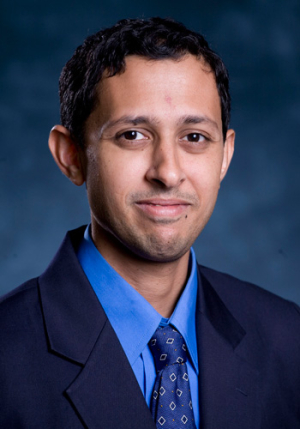A professor with the University of Houston Cullen College of Engineering has won a grant worth approximately $2.1 million to study the best ways to modify human immune cells to fight against cancer.
Navin Varadarajan, assistant professor of chemical and biomolecular engineering, won the grant from the National Institutes of Health and its National Cancer Institute to conduct this immunotherapy study.
One of the most promising avenues of cancer research and treatment, in immunotherapy human immune cells are modified and trained to fight hard-to-treat tumors.
Varadarajan’s research focuses on engineered T cells, immune cells that, among other functions, recognize and attack disease cells. One immunotherapy approach involves modifying naturally occurring T cells to fight cancer cells. Known as chimeric antigen receptor T cells, or CAR T cells for short, these cells have proven effective in combating some cancers that are particularly difficult to treat.
"In response to tumor recognition, CAR T cells can proliferate within the patient. Unlike traditional drugs that are removed from the body, these cells can multiply. The better these CAR T cells proliferate and survive within the host, the better the chances of getting rid of the tumor," said Varadarajan.
Among the cancers that have been responsive to CAR T cell therapy are B-cell lymphomas such as leukemia. This therapy, in combination with other immunotherapy techniques, has achieved impressive clinical successes in fighting B-cell lymphomas that are otherwise considered untreatable outside of stem cell transplantation.
Researchers and clinicians, though, don’t know exactly what properties of these CAR T cells are responsible for their clinical success.
Varadarajan, then, will use a novel research tool of his own design to study individual CAR T cells. The tool, dubbed the nanowell array, is a polymer slide containing tens of thousands of individual chambers, each 125 picoliters. At this size, the chambers are the perfect size to isolate and study individual cells.
In this project, Varadarajan will expose CAR T cells used to fight these lymphomas to a nanowell array. The individual cells trapped in the array’s chambers will then be studied in order to determine their individual properties relating to their ability to fight cancer, such as their ability to kill tumor cells and what molecules they produce in order to communicate with other immune cells.
Cells from the same batches will also be infused into patients, allowing researchers to correlate CAR T cell properties with clinical outcomes over the course of months, effectively allowing them to identify which modified T cells are most effective at fighting cancer.
The research won’t stop with this identification, though. Three to six months after infusion, Varadarajan and his collaborators will take blood from their patients and isolate their CAR T cells. Once again using the nanowell array, Varadarajan will isolate and study these cells, most of which will be several generations removed from the cells the patients originally received. He will then determine how well those daughter cells maintain the properties that make them effective cancer fighters.
By singling out those CAR T cells that are most effective and most long-lived, said Varadarajan, researchers should be able to design better treatment regimens.
"Immunotherapy is at the forefront of cancer treatment and research. In some cases it has actually resulted in complete remission," he said. "To help the most people, though, we’ve got to understand exactly what properties of engineered cells are most effective at fighting cancer. This research will help us quickly identify those properties so they can be included in the future rounds of research and clinical trials."
Varadarajan’s collaborators on this project include Laurence Cooper, a physician and researcher at the University of Texas MD Anderson Cancer Center who will create the CAR T cells being studied; Badrinath Roysam, electrical and computer engineering department chairman at the Cullen College, who will use his FARSIGHT histopathology software suite to track cell movement inside the chambers of the nanowell array; and Peng Qiu, an assistant professor of bioinformatics and computational biology at MD Anderson who will perform data analysis.
Varadarajan also emphasized the key role Cullen College graduate students in both his and Roysam’s labs will play in this project. Not only will they be involved in the research itself, it was through their efforts that the investigation earned funding in the first place, he said. "The ability of our graduate students and postdocs to work together and to address scientific and engineering challenges was essential in generating the data required to successfully apply for this grant. Their efforts demonstrate the ability of UH graduate students to lead cutting edge research projects."
